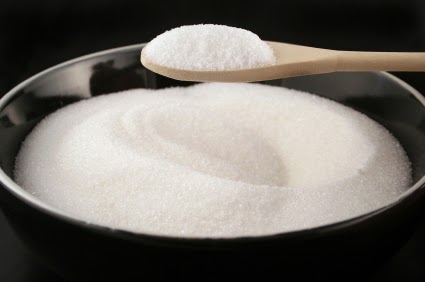Added Sugars –Too Much of a Sweet Thing
Would you like some anhydrous dextrose with your coffee? Even if your food or drink label’s ingredient list doesn’t have the word “sugar” on it, you may be getting added sugars.
Despite revolutionized technology that has allowed the widespread communication of nutrition and health messages, a recent report by the World Health Organization shows that added sugars make up almost 16% of Americans’ total calories.
Added sugars in processed foods come with no nutrients. No antioxidants. No essential vitamins and minerals. No disease-fighting phytochemicals.
Added sugars lead to unhappy blood tests. They increase your risk of cardiovascular disease because high amounts of sugar can significantly increase triglyceride levels.
Sugar, regardless of what name it goes by, promotes tooth decay. Bacteria feed and thrive on sugar. A high sugar diet can increase chances of developing unnecessary cavities.
Undercover Sugar
Many foods and drinks, including sports drinks, pack added sugars that most consumers do not notice even if they do read the label. Consider this overwhelming list of terms a label may use to show (or disguise) the added sugars. Some are more obvious than others:
Agave, anhydrous dextrose, beet sugar, brown sugar, cane crystals, cane sugar, confectioner’s powdered sugar, corn sweetener, corn syrup, crystalline fructose, dextrin, evaporated cane juice, fruit-juice concentrates, honey, high-fructose corn syrup, corn syrup solids, corn sweetener, honey, hydrolyzed starch, invert sugar, maple syrup, malt, malt sugar, malt syrup, molasses, nectars, pancake syrup, raw sugar, syrup, turbinado sugar, white sugar, white granulated sugar and the “ose” family (fructose, glucose, dextrose, lactose, maltose, sucrose).
Quite often, we notice low-fat products are packed with sugars to make up for the taste change of removing fat. For example, if you plan to purchase nonfat yogurt, make sure it is not sweetened with added sugars. Keep an eye out for any of these sources of added sugars in the ingredient list.
Here is a rule of thumb: “low” added sugar content would be less than 5 grams per 100 grams of product. “High” added sugar content would be more than 15 grams per 100 grams of product.
Remember to balance your carbohydrate intake with high-quality and lean protein to keep your energy stable and blood sugar under control. This will help prevent energy crashes and will prevent excess fat storage. Instead of adding sugar to your drinks, give them a spicy, earthy taste with cinnamon or nutmeg. Skip the refined sugars and grains and replace them with whole grains.
World Health Organization. Diet, nutrition and the prevention of chronic diseases: report of a Joint WHO/FAO Expert Consultation. Geneva, Switzerland: World Health Organization, 2003: 54–71.
